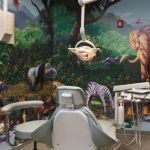Tips for Brushing Your Teeth Properly: A Comprehensive Guide
- 1 - Why Brushing Your Teeth is Important
- 2 - Steps to Brush Your Teeth Properly
- 3 - Common Mistakes While Brushing
- 4 - Choosing the Right Toothbrush
- 5 - The Importance of Toothpaste
- 6 - When to Brush Your Teeth
- 7 - Maintaining Long-Term Oral Health
1. Why Brushing Your Teeth is Important
Brushing your teeth is essential for maintaining good oral health. Proper brushing helps remove food particles and plaque, preventing cavities and gum disease. It also keeps your breath fresh and your teeth looking clean and white. Research has shown that brushing for two minutes twice a day can significantly reduce the risk of dental issues.
2. Steps to Brush Your Teeth Properly
Proper brushing technique is key to getting the most out of your dental routine. Here’s how to do it:
- Apply a pea-sized amount of fluoride toothpaste to your toothbrush.
- Hold the toothbrush at a 45-degree angle to your gums.
- Use gentle, circular motions to brush the front, back, and chewing surfaces of each tooth.
- Spend at least two minutes brushing your teeth to ensure you cover all areas.
- Don’t forget to brush your tongue and the roof of your mouth to remove bacteria and freshen your breath.
Remember to brush all sides of each tooth for a thorough clean.
3. Common Mistakes While Brushing
Many people unknowingly make mistakes while brushing their teeth, which can lead to ineffective cleaning and potential dental issues. Here are some common mistakes to avoid:
- Brushing too hard: Applying too much pressure can damage your gums and enamel.
- Not brushing long enough: Brushing for less than two minutes reduces the effectiveness of your oral hygiene.
- Using the wrong toothbrush: A toothbrush with hard bristles can harm your teeth and gums. Opt for a soft-bristled brush.
4. Choosing the Right Toothbrush
Choosing the right toothbrush is essential for proper oral care. It’s important to pick one that fits comfortably in your mouth and suits your brushing style. Here’s what to consider:
- Bristle softness: Choose a toothbrush with soft bristles to avoid damaging your gums.
- Size of the brush head: Select a brush head size that allows you to reach all areas of your mouth easily.
- Electric vs. Manual: Both electric and manual toothbrushes can be effective, but an electric brush can provide a more thorough clean with less effort.
5. The Importance of Toothpaste
The right toothpaste plays a significant role in your brushing routine. Fluoride toothpaste is recommended because it helps prevent tooth decay and strengthens enamel. However, there are also toothpaste options designed for specific needs:
- Whitening: Toothpastes with whitening agents can help remove surface stains and improve the appearance of your smile.
- Sensitive teeth: If you experience sensitivity, look for toothpaste formulated to alleviate discomfort.
- Natural options: For those seeking a more natural approach, there are fluoride-free and herbal toothpaste options available.
6. When to Brush Your Teeth
Brushing your teeth at the right times is crucial for maintaining optimal oral health. Here’s the best routine:
- Brush in the morning: Brushing after waking up helps remove bacteria that have built up overnight.
- Brush before bed: Brushing before bed ensures that no food particles or plaque remain on your teeth overnight.
- After meals: If possible, brush after meals to remove food particles and prevent plaque buildup.
Avoid brushing immediately after consuming acidic food or drinks, as this can weaken enamel.
7. Maintaining Long-Term Oral Health
Brushing your teeth properly is just one aspect of maintaining good oral health. To keep your mouth in great condition over the long term, consider these tips:
- Floss daily: Flossing removes debris between your teeth that your toothbrush may miss.
- Visit your dentist regularly: Regular dental checkups are essential for catching problems early.
- Eat a balanced diet: Eating nutrient-rich foods promotes healthy teeth and gums.
By adopting these habits, you can ensure a lifetime of healthy teeth and a bright smile.
If you want to take your oral care to the next level, consider upgrading to a high-quality electric toothbrush. Learn more about the latest models and how they can improve your dental routine. Click here to explore top-rated toothbrushes!







 Deem Thomas E DDS5.0 (4 review)
Deem Thomas E DDS5.0 (4 review) Sung Lee Orthodontics5.0 (108 review)
Sung Lee Orthodontics5.0 (108 review) Articolo Orthodontics5.0 (4 review)
Articolo Orthodontics5.0 (4 review) Elmwood Park Cosmetic Dentistry5.0 (1 review)
Elmwood Park Cosmetic Dentistry5.0 (1 review) Children's Dental Health of Plymouth Meeting4.0 (352 review)
Children's Dental Health of Plymouth Meeting4.0 (352 review) Lakeshore Family Dentistry: Jason P. Ross, Ellen D. Jacobson5.0 (3 review)
Lakeshore Family Dentistry: Jason P. Ross, Ellen D. Jacobson5.0 (3 review) The Importance of Oral Health Education During Pregnancy for a Healthy Pregnancy
The Importance of Oral Health Education During Pregnancy for a Healthy Pregnancy Best Tips for Brushing Your Teeth Properly for Healthy Gums: Essential Techniques for Oral Health
Best Tips for Brushing Your Teeth Properly for Healthy Gums: Essential Techniques for Oral Health Why Skipping Dental Checkups Can Lead to Bigger Oral Health Problems
Why Skipping Dental Checkups Can Lead to Bigger Oral Health Problems Advantages of Porcelain Dental Restorations
Advantages of Porcelain Dental Restorations How Can Diabetes Cause Tooth and Gum Problems? Preventing and Managing Oral Health Issues
How Can Diabetes Cause Tooth and Gum Problems? Preventing and Managing Oral Health Issues Healthy Habits for Promoting Good Oral Health and Hygiene: Tips for a Healthy Smile
Healthy Habits for Promoting Good Oral Health and Hygiene: Tips for a Healthy Smile